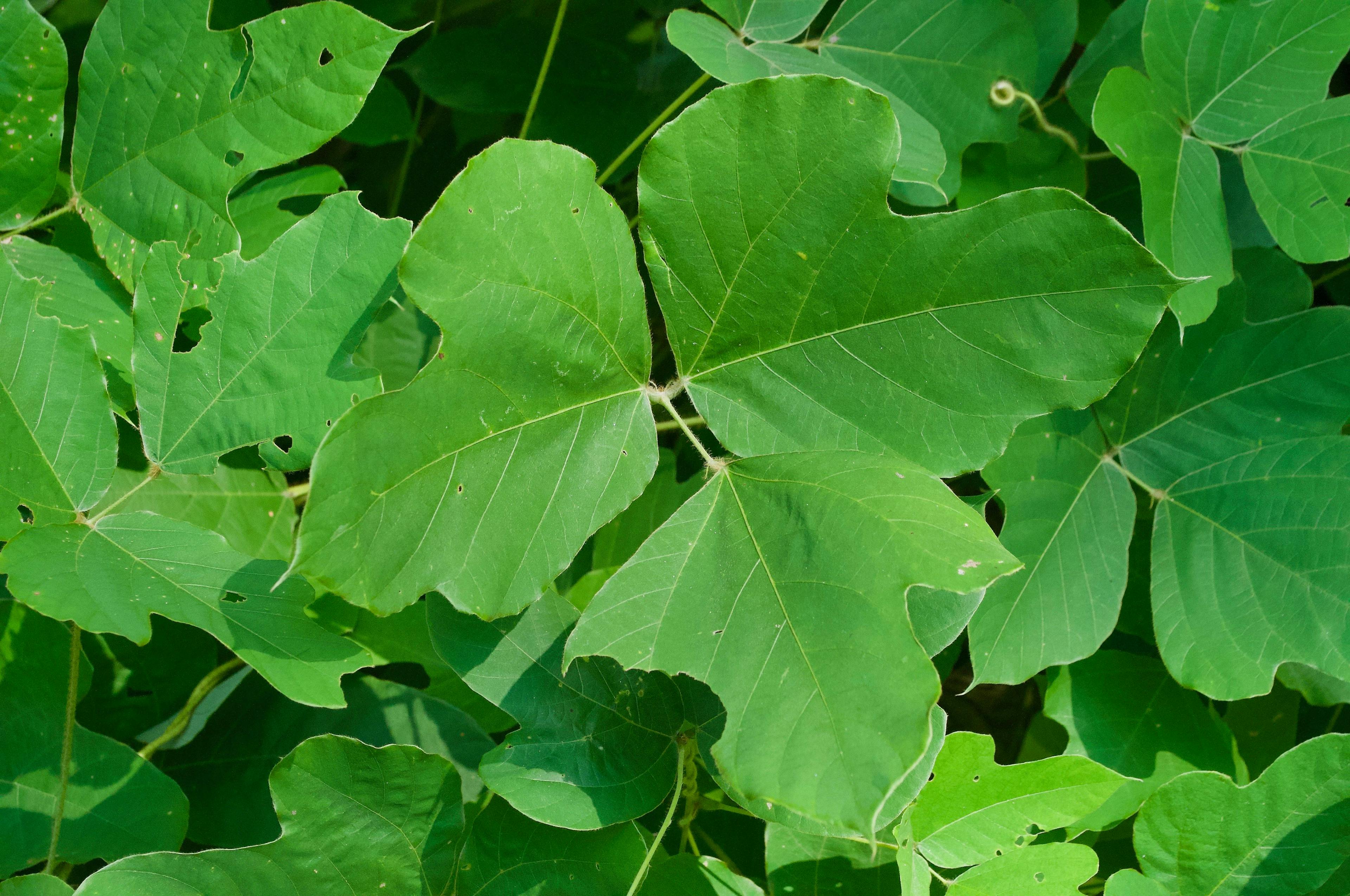The smell of decaying kudzu (Pueraria montana var. lobata) vines is unlike anything else. It's reminiscent of body odor, lingering on the skin and wafting a long distance downwind. This smell was the backdrop to a kudzu-processing party held on the fourth of July in 2019, in a mountain creek in western North Carolina. Ten days previously, a group of artists, activists, and environmentalists called Kudzu Culture Industries had harvested armloads of kudzu vines, leaving them to rett, or ferment, in five-gallon buckets. Bacteria break down bark and connective tissue, producing the pungent smell but allowing us to wash away the slimy unwanted portions of the vine. By the end of the day our hands are stinky, but we have separated the kudzu vines into beautiful golden bast fibers to be woven into fabric, and sturdy central pith to be used in basket making. We did not produce large quantities of anything, but this was not the point. After hours of work, kudzu transformed from the oppressive green vine that drapes across hillsides and telephone wires into raw material to create useful and beautiful things.
The members of Kudzu Culture Industries (KCI) who attended this party say they are working to change the "culture of use" surrounding Kudzu in the American South. This much-maligned plant was intentionally introduced to North America by humans and has since transformed the Southern landscape through uncontrolled spreading. Land managers fight the spread with pesticides, but it often seems like a losing battle. KCI members argue that this is a battle we should not even try to fight. Though kudzu may be a "foreigner" in North America, they suggest that the presence of kudzu in the American South is not in itself a problem. The problem is that it has so enthusiastically colonized ecosystems that have already been disturbed by a long history of plantation agriculture and other forms of resource exploitation by European colonists and their descendants. Eliminating kudzu is not merely a matter of eradicating a non-native plant so that species that evolved in the South could thrive—it would require "turning back the clock" and re-creating a pre-colonial landscape. Instead, they suggest we look to kudzu's native habitat for guidance as to how that humans can live alongside kudzu. They envision a future in which kudzu is no longer seen as a dangerous foreign invader, but rather one inhabitant of a sustainable post-colonial landscape that provides humans with food, fiber, and medicine.
Though some Southerners have adopted it as a symbol of modern Southern life due to its sheer ubiquity (Alderman and Alderman 2001), it has a reputation as an aggressive weed. On country roads, it's common to come around a curve in the road to find an ocean of green leaves covering what had once been an old field, an abandoned gas station, a crumbling trailer. At times the sight is almost majestic—trees become towering vine-covered pillars among acres of leaves. Kudzu has become known as "the vine that ate the South," and is described in language that suggests science-fiction monsters or enemy military forces. It's a "green invader" that spreads its tentacles into new territory (Rather 2003), it's a "green bomb" that explodes every spring (Flanders n.d.), it's a "three-leafed monster" (Chapman 2016), it's "terrorizing native plants" (The Nature Conservancy n.d.).
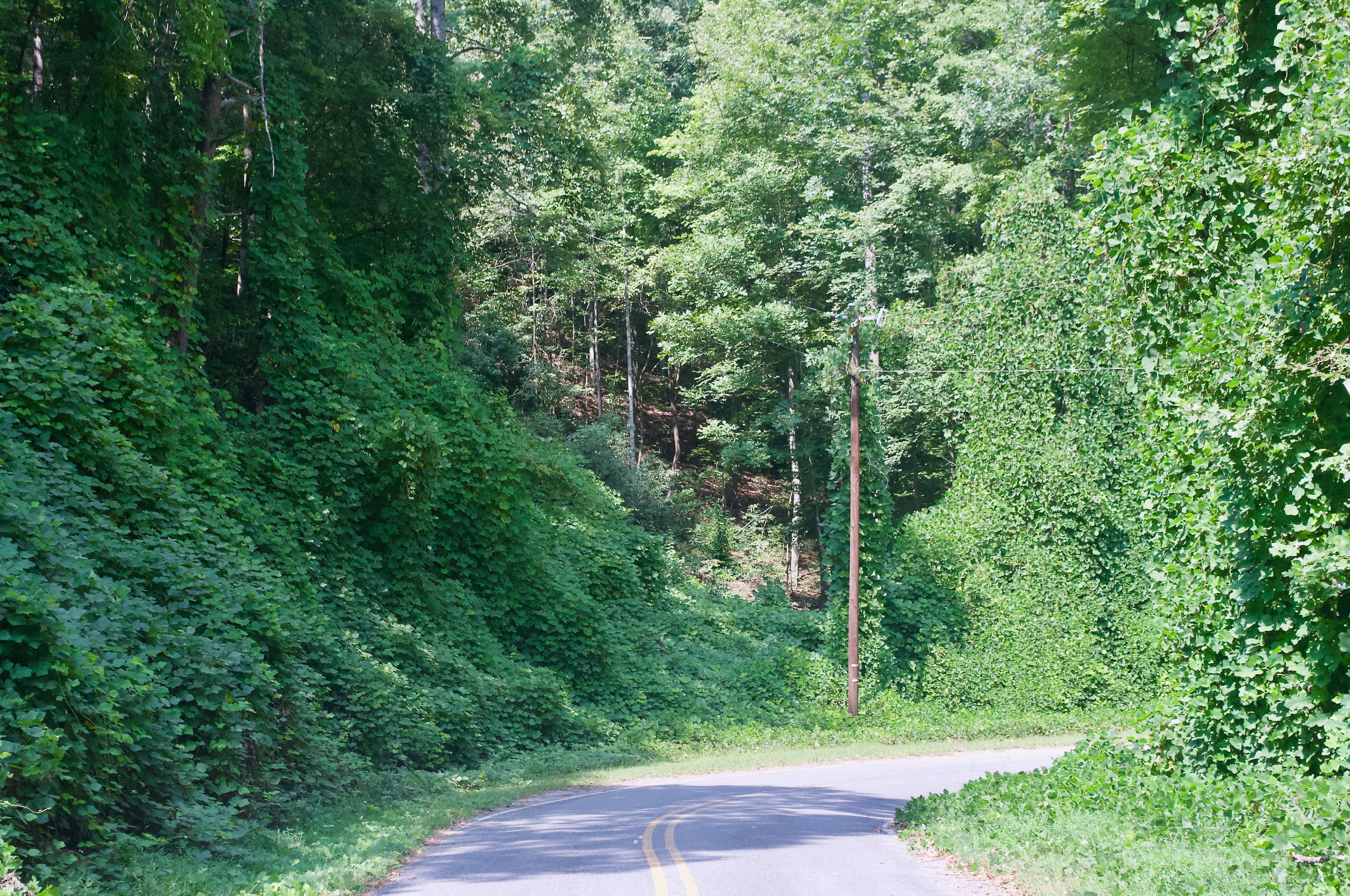
The notion that kudzu mindlessly swallows or displaces everything in its path is not entirely accurate. Kudzu thrives in disturbed landscapes: abandoned fields, roadsides, timber harvest sites (Blaustein 2001). Kudzu is invasive because we have created so many landscapes where it thrives. Though an established stand of kudzu has the ability to reach forest interiors after overtopping trees and shading out smaller plants at forest edges (Forseth and Innis 2004), kudzu vines are rarely seen in mature forest communities far from disturbances like power lines or logging roads. Even if all the kudzu in the United States were to disappear tomorrow, the "blasted landscapes" (Tsing 2015) of industrial capitalism where invasive species thrive would still remain. Kudzu doesn't destroy native ecosystems. Instead, it occupies the ecological niches that have already been destroyed by human invaders in North America through large-scale transformations to the agricultural landscape of the American South.
Ironically, kudzu was once widely planted in hopes that it would help heal the damage that resulted from intensive farming of cotton, tobacco, and other cash crops that left the soil depleted and caused heavy erosion. Kudzu, like other members of the pea family, can replenish depleted soils with its ability to fix nitrogen. Its deep roots could hold topsoil on hillsides and "heal" fields that had become too gullied by erosion to allow planting (Stewart 1997). The vines can grow up to a foot in length per day and the plant has deep roots that allow it to survive drought and fire. Planting kudzu seemed like an ideal intervention; the US government began to pay farmers across the South up to $8 per acre to plant kudzu (Miller and Edwards 1983). However, kudzu's ability to grow rapidly and withstand difficult conditions—the very features that made it so desirable as a cover crop for exhausted farms—led to the plant's out-of-control expansion. As early as the 1930s, a booklet promoting kudzu in Alabama noted that "Some farmers have opinions that kudzu may become a pest" and may "spread into fields where it is not wanted." The booklet dismisses this concern, as kudzu "may be easily eradicated by grazing or by plowing" (Sturkie and Grimes 1939, 20). In subsequent years, kudzu did indeed become a pest. Kudzu never became popular as animal fodder and was ill-suited to post-World War II mechanized agriculture (Winberry and Jones 1973). Additionally, a declining rural population throughout the 20 th century meant that many farms were left un-mowed and unmanaged (Forseth and Innis 2004). In the 1950s, the USDA stopped recommending kudzu for use as a cover crop, and in 1970 it was recognized as a weed.
Left unmanaged, kudzu can cause environmental and economic harm. The vines can cause problems for infrastructure; power companies spend an estimated $1.5 million annually to keep kudzu from damaging electric lines and transformers (Britton, Orr, and Sun 2002). The most common method of control is through the repeated application of pesticides like glyphosate in high concentrations (Miller 1996), making the plants unsuitable for food or medicine. Kudzu can significantly alter native ecosystems by strangling trees and shading plants with its broad leaves, though there are few studies that have looked at kudzu's impact on biodiversity at a landscape scale (Loewenstein et al. 2018).
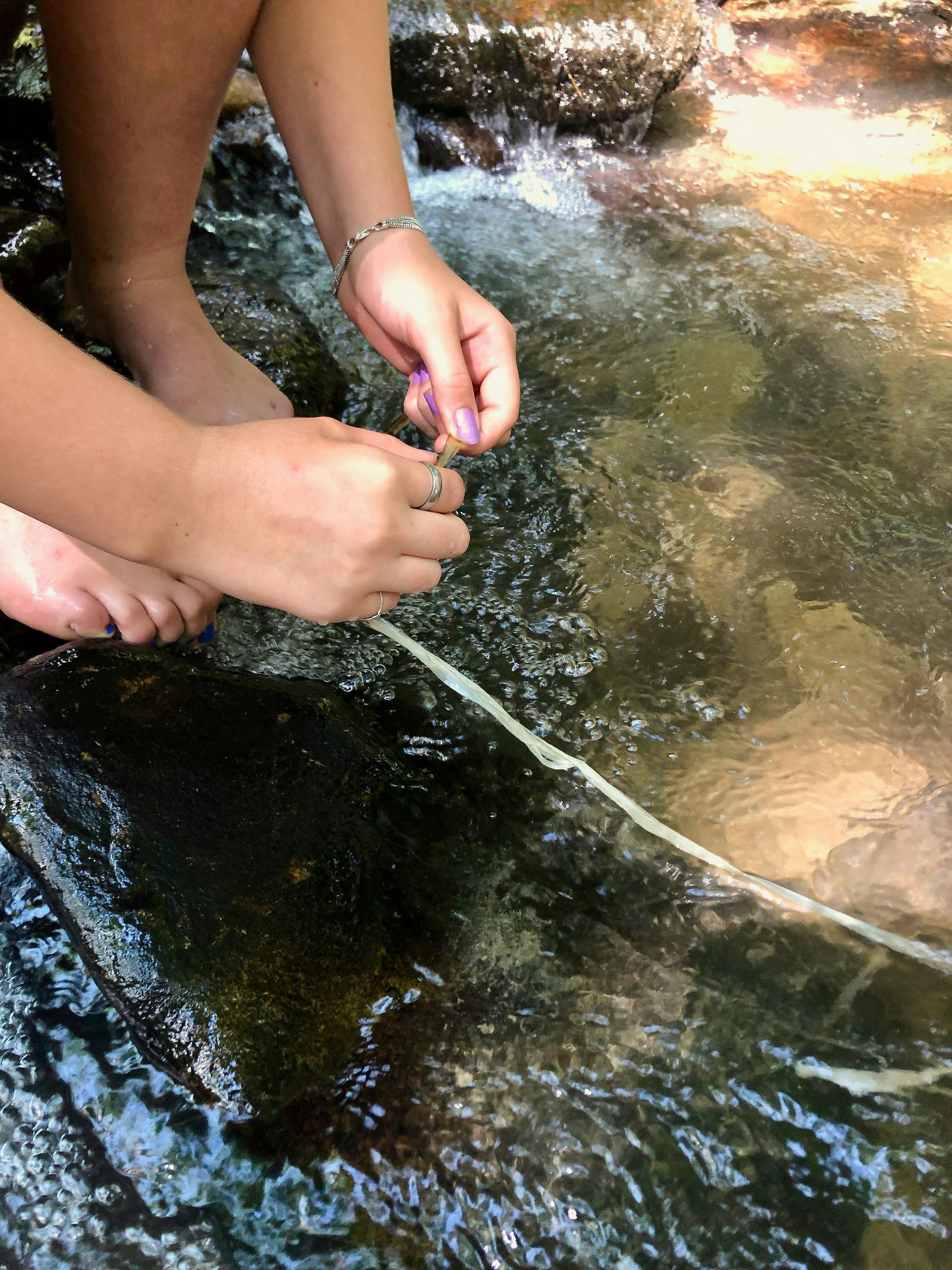
However, a significant part of the problem with kudzu is simply that it is not from here. Kudzu is described as alien, foreign, exotic. On one level, the way kudzu is talked about fits into a nativist, xenophobic discourse in which foreign plants, like foreign people, are an enemy that must be excluded or eliminated (Groening and Wolschke-Bulmahn 1992). There are eerie resonances between the way that kudzu is described and the language that is used to describe immigrants and refugees in the United States in the current political climate, where migrants are sometimes described as foreign "invaders" who are taking over society from American citizens (Kaplan 2019).
At the same time, the idea that kudzu is a foreign invader that does not belong in the North American landscape is consistent with typical conservation and restoration narratives told by American environmentalists, in which the goal is to recreate the pristine, untouched wildernesses that are imagined to have covered North America before the arrival of Europeans (Cronon 1996). In both understandings of kudzu, it is what anthropologist Mary Douglas would call matter out of place (Douglas 2002), and must be eradicated in order to enable the native assemblage of species, the species that truly belong, to thrive. This is exacerbated by the fact that kudzu is a highly visible plant. The places where kudzu grows best—roadsides, abandoned farms, forest edges—are places that humans are able to easily see. Most people see the Southern landscape from the road, where the forest edges appear to be completely enveloped by a blanket of green kudzu vines.
However, simply eradicating all the kudzu would not transform the American South into a pre-colonial Eden. Despite all the language that suggests that kudzu is invading or swallowing a native American landscape, the rural Southeast had already been transformed before kudzu was ever introduced. The landscape will always bear the scars of large-scale intensive agriculture. The old-growth forests that had been cleared for cotton or tobacco or timber will not return. Transformations of the landscape continue today, as roads penetrate deep into remaining forests to access mines and gas wells and logging operations and luxury housing developments pop up on picturesque mountainsides.
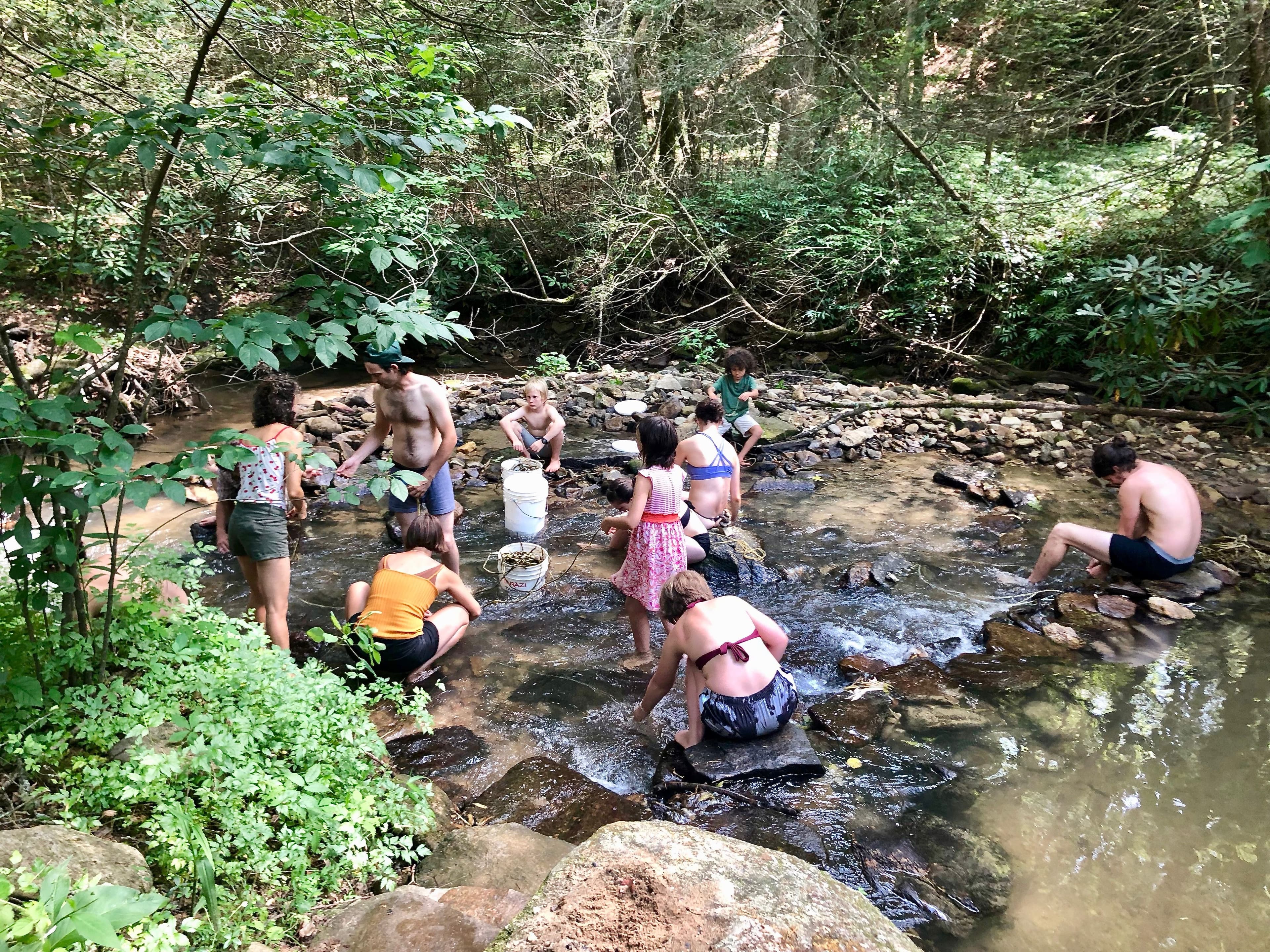
Furthermore, these drastic landscape transformations are situated within the context of global climate change; the climate today is not the same as it was before kudzu was introduced to North America. If all the kudzu in the South were to disappear tomorrow, we could not expect that ecosystems would return to the way they were before it was introduced. The landscape has been irreversibly been changed in ways that favor plants like kudzu—fast-growing plants that can withstand poor soils and difficult growing conditions. Without kudzu, some other "invasive" species would likely take its place.
Kudzu Culture Industries argues that the problem with kudzu is not that it is foreign, it is that it has not yet been incorporated into what they refer to as a "culture of use." They point to common uses of kudzu in East Asia, where the roots are used for edible starch and traditional medicine, the vines are used for fiber, and the leaves are used for animal fodder. Regular harvest prevents the kind of out-of-control proliferation that occurs in the United states (Li et al. 2011). From time to time, kudzu jelly made from the vine's fragrant blossoms sometimes appears in farmers' markets, while baskets made from dried kudzu vines are for sale at shops specializing in Southern handicrafts, but these uses of kudzu do not require a large enough harvest to make a dent in the estimated 3 million hectares (Forseth and Innis 2004) that are currently covered in the plant.
Creating a "culture of use" is, on one level, about finding profitable uses of kudzu in order to create an incentive to control kudzu through regular harvest. Yet it also requires a more profound reconfiguration of the relationship between humans and kudzu in the South. Members of Kudzu Culture Industries express grand visions for what a North America with a true culture of use might look like: an American South that is not smothered in blankets of green vines, but rather is home to carefully-managed stands of kudzu that are regularly harvested, perhaps in polycultures with livestock like goats and nut-bearing trees like black walnuts. We might export kudzu products to Asia where there is a more established culture of use, or Southerners might learn to cook with kudzu starch or begin taking kudzu root extract, which is considered a liver tonic in traditional Chinese medicine and is being explored as a potential treatment for alcoholism (Keung and Vallee 1998). The human-kudzu encounter could move beyond the adversarial, as people develop new ways of thinking about, seeing, and using this vine.
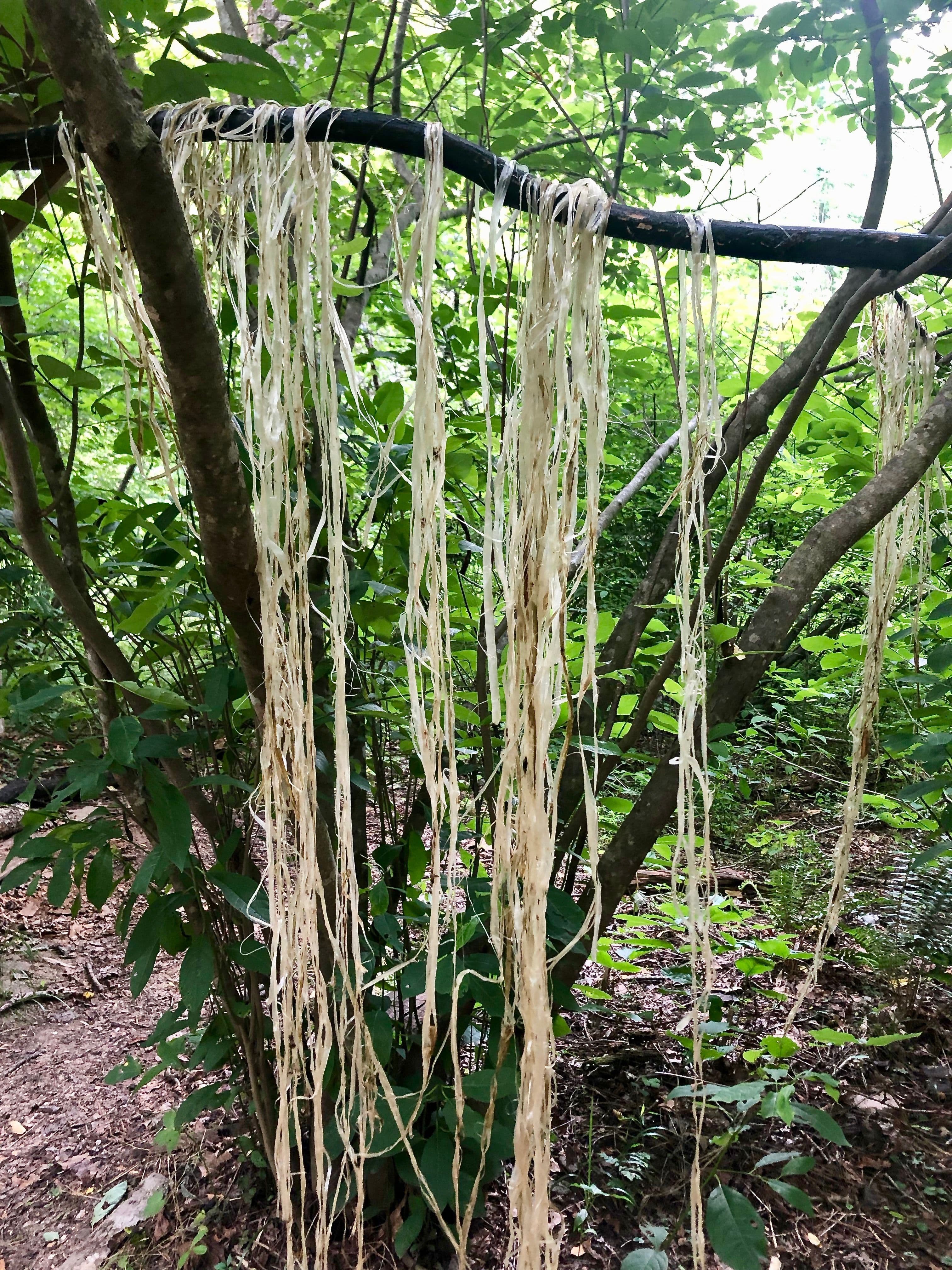
More broadly, KCI's efforts to change how North Americans engage with kudzu challenge the understanding of "invasive" species in the first place. One of KCI's founders argues that the introduction of kudzu to North America wasn't an invasion, "it was a full-on invitation" as humans intentionally planted the vine in the kinds of steep, eroded, depleted landscapes where it thrives. So-called "invasive" species are present in the landscape because of the actions of humans, and the kudzu activists of North Carolina argue that humans need to play a role in maintaining the plant in balance with other species in the ecosystem. Invasive species aren't frightening monsters to be battled with pesticides in the hopes of re-creating the landscape of the past; humans can instead form a relationship with these species in which human use balances out the plant's aggressive growth habits. As another KCI founder asked, "What do we do now with the ecosystem that we have, with the plants that are actually here? [We have] one hundred eighty species of invasive-labeled plants in the Southeast US. How do we get in relationship with them and allow them to be part of an emergent ecology now?"
So far, the attempts to find large-scale uses of kudzu in western North Carolina have been tentative and experimental. In Asia, kudzu fiber has historically been used to make luxury fabrics, but this is a highly labor-intensive process, as the kudzu-processing party described at the beginning of this article indicates. One KCI founder shared that "our price per ounce of processed fiber is way higher than what anyone who wants to buy it to make a useful item, other than very boutique kind of things, would be able to buy." Similarly, the roots can be processed to produce a starch that can be used in cooking much like arrowroot or cornstarch, but this too is a time-consuming and labor-intensive process. There are some efforts to automate some of these processes—a few Kudzu Culture members reconfigured an old washing machine to process kudzu roots, and a few people are experimenting with processing methods that would allow kudzu fiber to be spun by machine.
Yet Kudzu Culture Industries' public outreach efforts are just as instrumental in achieving their goal of creating a culture of use of kudzu. The idea that kudzu is a green invader or a three-leafed monster is still pervasive; people complain about kudzu encroaching on gardens or yards. If kudzu can be imagined as a potential resource, it becomes less threatening.
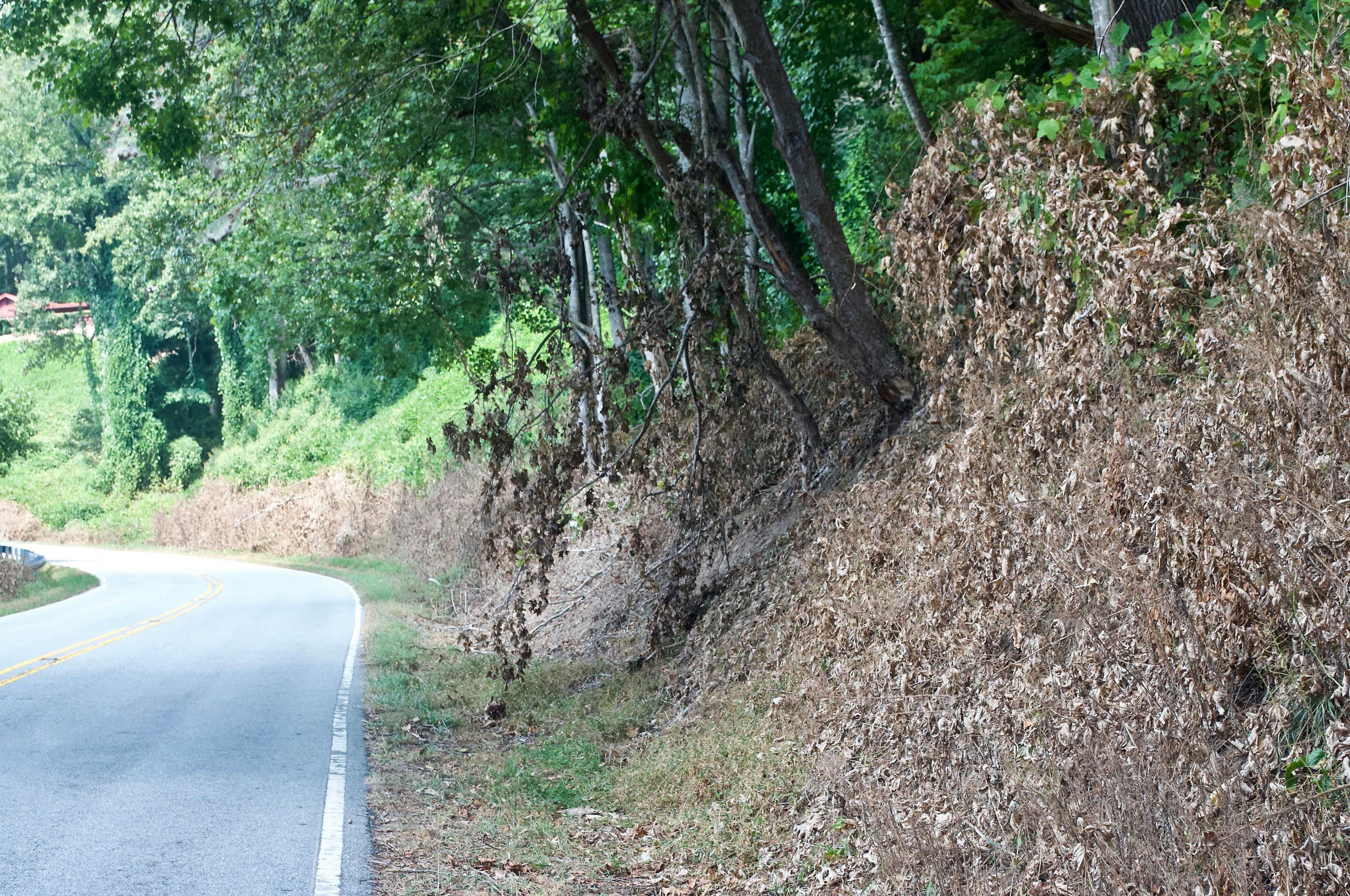
Non-native plants are not simply foreign invaders that are contaminating pristine native plant assemblages. They are new species that are finding niches in the landscapes that humans have created. The plants themselves aren't the problem, they are a problem because they exacerbate the damage that industrial agriculture and other forms of resource extraction have already done to the landscape by colonizing disturbed ecosystems. Kudzu, like many invasive plants, are part of the legacy of settler colonialism. But the path to healing is not just eradicating any "problematic" plant that was not present in this ecosystem prior to European invasion. Instead, we need to reconfigure our relationships with the plants that exist in the ecosystem as it is in order to create a more sustainable future.
References
Alderman, D. H. and Alderman, D. G. 2001. Kudzu: A Tale of Two Vines. Southern Cultures, 7(3), pp.49--64. Blaustein, R. J. 2001. Kudzu's Invasion into Southern United States Life and Culture. In: J. McNeely, ed. The Great Reshuffling: Human Dimensions of Invasive Species. Gland, Switzerland: IUCN. Britton, K. O., Orr, D. and Sun, J. 2002. Kudzu. In: R. van Driesche, S. Lyon, B. Blossey, M. Hoddle and R. Reardon, eds. Biological Control of Invasive Plants in the Eastern United States. Morgantown, WV: USDA Forest Service. Chapman, D. 2016. Kudzu's Entanglement of South Begins to Unravel. The Atlanta Journal-Constitution. Cronon, W. 1996. The Trouble with Wilderness; or, Getting Back to the Wrong Nature. In: W. Cronon, ed. Uncommon Ground: Rethinking the Human Place in Nature. New York: Norton. Douglas, M. 2002. Purity and Danger: An Analysis of Concepts of Pollution and Taboo. London: Routledge. Flanders, D. n.d. Kudzu Conundrum: How to Deal With This Invasive Plant. HGTV. [Accessed 28 September 2019] Forseth, I. N. and Innis, A. F. 2004. Kudzu (Pueraria Montana): History, Physiology, and Ecology Combine to Make a Major Ecosystem Threat. Critical Reviews in Plant Sciences, 23(5), pp.401--13. Groening, G. and Wolschke-Bulmahn, J. 1992. Some Notes on the Mania for Native Plants in Germany. Landscape Journal, 11(2), pp.116--26. Kaplan, T. 2019. How the Trump Campaign Used Facebook Ads to Amplify His 'Invasion' Claim. The New York Times, [online] August 5. Keung, W. M. and Vallee, B. L. 1998. Kudzu Root: An Ancient Chinese Source of Modern Antidipsotropic Agents. Phytochemistry: Special Issue in Honor of Professor Clarence A. Ryan, 47(4), pp.499--506. Li, Z., Dong, Q., Albright, T. P. and Guo, Q. 2011. Natural and Human Dimensions of a Quasi-Wild Species: The Case of Kudzu. Biological Invasions, 13(10), pp.2167-79. Loewenstein, N. J., Enloe, S. F., Everest, J. W., Miller, J. H., Ball, D. M. and Patterson, M. G. 2018. The History and Use of Kudzu in the Southeastern United States. Alabama Cooperative Extension System. [Accessed 15 August 2018] Miller, J. H. 1996. Kudzu Eradication and Management. In: D. Hoots and J. Baldwin, eds. Kudzu: The Vine to Love or Hate. Kodak, TN: Suntop Press. Miller, J. H, and Edwards, B. 1983. Kudzu: Where Did It Come from? And How Can We Stop It? Southern Journal of Applied Forestry, 7, pp.165--69. Peters, J. W., Grynbaum, M. M., Collins, K., Harris, R. and Taylor, R. 2019. How the El Paso Killer Echoed the Incendiary Words of Conservative Media Stars. The New York Times, [online] 11 August. Rather, J. 2003. Green Invaders Spread Their Tentacles. The New York Times, [online] 15 June. Stewart, M. A. 1997. Cultivating Kudzu: The Soil Conservation Service and the Kudzu Distribution Program. The Georgia Historical Quarterly, LXXXI(1), pp.151--67. Sturkie, D. G, and Grimes, J. C. 1939. Kudzu: Its Value and Use in Alabama. Auburn, AL: Alabama Polytechnic Institute. The Nature Conservancy. n.d. Journey with Nature: Kudzu. The Nature Conservancy. [Accessed 28 September 2019] Tsing, A. L. 2015. The Mushroom at the End of the World: On the Possibility of Life in Capitalist Ruins. Princeton: Princeton University Press. Winberry, J. J. and Jones, D. M. 1973. Rise and Decline of the 'Miracle Vine': Kudzu in the Southern Landscape. Southeastern Geographer, 13(2, pp.61-70.
